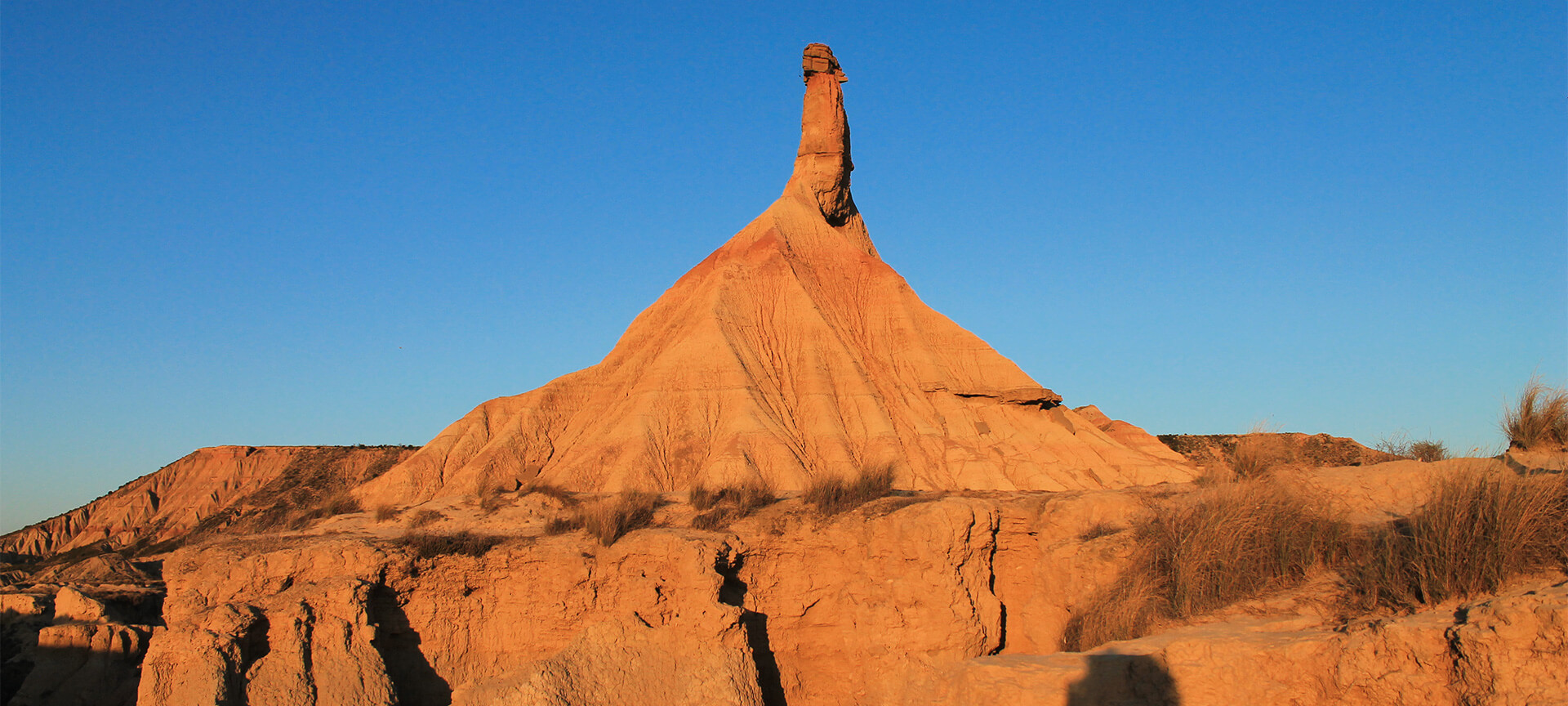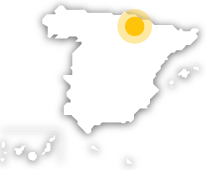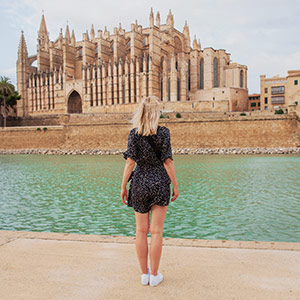
Bardenas Reales Nature Reserve

The “semi-desert” of the Ribera
To the southeast of Navarra lies this nature reserve, with a surface area of 41,845 hectares, declared a UNESCO World Biosphere Reserve in 2000.
It is a semi-desert landscape, in part, where torrential rains have shaped a terrain of gypsum and clay. Vast plains are interspersed with ravines, cliffs and hills that reach up to 600 meters in height. This unique region is not part of any specific municipality, but 19 municipalities, two valleys of the Pyrenees and a monastery share the rights to these lands. It borders to the north, west and south with the municipalities of Carcastillo, Santacara, Mélida, Caparroso, Villafranca, Cadreita, Valtierra, Arguedas, Tudela, Cabanillas, Fustiñana and Buñuel. To the east, it borders with the autonomous region of Aragon, which also has its own Bardena outside this natural space.The so-called White Bardena brings together the whitest landscapes, with gypsum substrate and steppe vegetation. Aleppo pine forests and clay soils are found in the so-called Bardena Negra. Before the declaration of a natural park (1999), the scenic wealth of this environment was already partially protected in the form of three Nature Reserves, two of them within the current park. This is the case of Vedado de Eguaras, where you can admire a small cirque surrounded by gypsum ravines and populated by junipers, Aleppo pines and rosemary. Eurasian eagle-owls, golden eagles, and Egyptian vultures nest in the so-called “Rincón de Bú”. The La Negra Falls, for their part, are a series of crevasses that reach a depth of up to 270 meters. Overall, the Bardenas Reales are home to some 24 birds of prey (peregrine falcon, booted eagle, griffon vulture, etc.), as well as steppe birdlife, such as the great bustard and the lark.The natural park is also home to more than 28 different species of mammals, eight of which are micromammals such as the little shrew or the Moorish mouse. The natural and artificial water basins are home to trout, barbel and tench, while newts and frogs coexist around them with a multitude of reptiles. The ocellated lizard, the ladder snake or the Spanish pond turtle are just some of them.
Bardenas Reales Nature Reserve
Park's Visitor Centre
Carretera del Parque Natural, km 6. Entrada desde la NA-8712, km 0,8.
31513 Arguedas, Navarre (Autonomous Community of Navarre)
Activa JS
What you need to know
-
Cultural information
The remains of Peñaflor Castle can be visited in the Vedado de Eguaras Nature Reserve. The towns of Arguedas and Valtierra preserve interesting historic centres and their churches are a must-see. Two other must-see spots are Virgen del Yugo Shrine (Arguedas) Monastery of La Oliva (Carcastillo). Tudela, capital of the region of La Ribera, has important religious and civil buildings in its medieval town centre.Every September the Sanmiguelada is celebrated. Transhumant herds from the Roncal and Salazar valleys enter the Bardenas to utilise the pastureland, as they did in the past.
-
Environmental information
The landscape variety of the Bardenas Reales gives rise to numerous natural habitats, dominated by diverse flora and fauna. Its moors, cliffs and ravines give us a broad view of the diversity of the Ribera region.
-
Information for visits
Arguedas is a good starting point for visiting the Bardena Blanca and in fact, the visitor centre is located 6 kilometres from this town in the direction of the natural park. The Alto de Aguilares, Castildetierra, Raso de la Junta, Pisquerra, La Ralla, El Rallón and La Cruceta are some of the places in this area. To spot the Bardena Negra, the best way is to take the road that connects Tudela with Ejea de los Caballeros and get to the plain of Sancho Abarca. El Paso (near the Monastery of La Oliva), Rada and the sanctuary of the Virgen del Yugo are other entry points.
Travel plans for inspiring you





